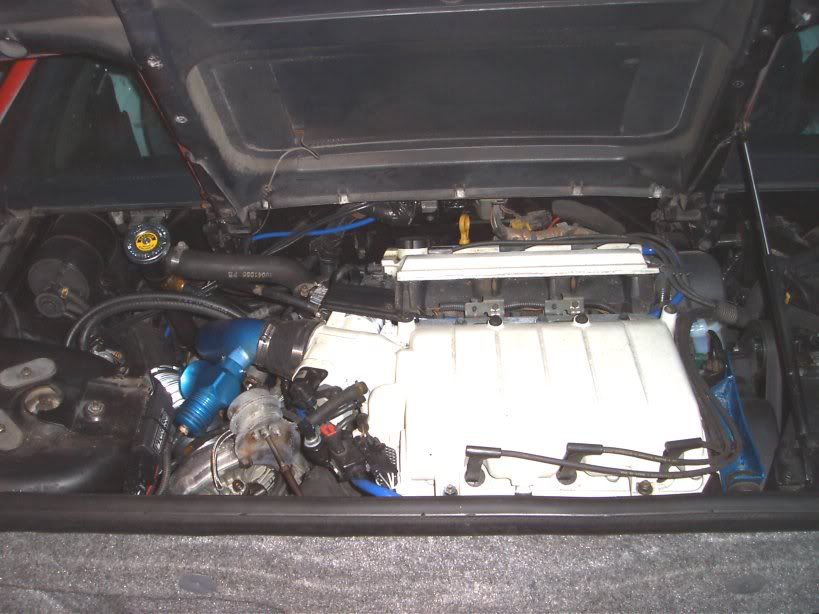Venting gas tank
Moderators: The Dark Side of Will, Series8217
Venting gas tank
How is everyone venting your gas tank? Are you keeping the stock charcoal canister and lines or doing something else? I really don't want a charcoal canister in my engine bay, but I do need a way practical way for the tank to vent. Suggestions? Thanks.
-
jstillwell
- Posts: 288
- Joined: Thu Dec 01, 2005 2:43 pm
- Location: Salinas, California
- Contact:
-
jstillwell
- Posts: 288
- Joined: Thu Dec 01, 2005 2:43 pm
- Location: Salinas, California
- Contact:
-
JamesCurtis
- Posts: 174
- Joined: Mon Feb 07, 2005 11:59 pm
- Location: Nebraska
-
Sinister Fiero
- Posts: 665
- Joined: Tue Jun 07, 2005 12:10 pm
- Location: Waterloo, Indiana
- Contact:
The charcoal canister is designed to "store" fuel vapors whenever the engine is not running. The EVAP system is designed to PURGE the canister at part-throttle while the engine is running.
If your ECU doesn't support an EVAP purge solenoid control function, not to worry. The stock Fiero 2.8 didn't use a purge solenoid. Instead, it used a ported vacuum signal from the engine to "activate" EVAP purge flow.
To make this work, all you need to do is find a ported vacuum source on your engine; something that doesn't get vacuum until the throttle is cracked. Then all you need to do is hook this ported vacuum source up to the small diaphram valve port on the canister. The other large port on the can that doesn't get hooked to the tank vent line can go straight to a manifold vacuum source. That little diaphram valve on the top of the canister will not allow ANY purge flow until it "sees" vacuum; that is how it is controlled on the 2.8 and 2.5.
You can relocate your canister to inside the fender area if you want to clean up the engine compartment. Mount it as high as possible and in as dry location as possible.
If your ECU doesn't support an EVAP purge solenoid control function, not to worry. The stock Fiero 2.8 didn't use a purge solenoid. Instead, it used a ported vacuum signal from the engine to "activate" EVAP purge flow.
To make this work, all you need to do is find a ported vacuum source on your engine; something that doesn't get vacuum until the throttle is cracked. Then all you need to do is hook this ported vacuum source up to the small diaphram valve port on the canister. The other large port on the can that doesn't get hooked to the tank vent line can go straight to a manifold vacuum source. That little diaphram valve on the top of the canister will not allow ANY purge flow until it "sees" vacuum; that is how it is controlled on the 2.8 and 2.5.
You can relocate your canister to inside the fender area if you want to clean up the engine compartment. Mount it as high as possible and in as dry location as possible.
-
The Dark Side of Will
- Peer Mediator
- Posts: 15750
- Joined: Wed Nov 24, 2004 11:13 pm
- Location: In the darkness, where fear and knowing are one
- Contact:
The tank needs to have room for the fuel to expand as temp changes. By moving that room into the fender, they could increase tank capacity.JamesCurtis wrote:That's the expansion tank that came with 87-88 fiero's, something about it allowed them to up the fuel capacity a gallon or two because of it, but I'm not sure how they came to the conclusion. Someone else will probly fill you in on the details :thumbleft:
I'd seen that on my '87, but didn't know that it wasn't on the early cars...
mine is even mounted sideways with no ill effects - it just opens when the engine is running and vents the fumes to the quarter panel area where the air filter is drawing from.S8n wrote:Then I guess I should leave it then, huh? So the charcoal canister can be completely vacuum operated then....I'll see where I can mount it. Thanks for the help!
(the engine looks very different now but the canister is still in the same place, far left)


